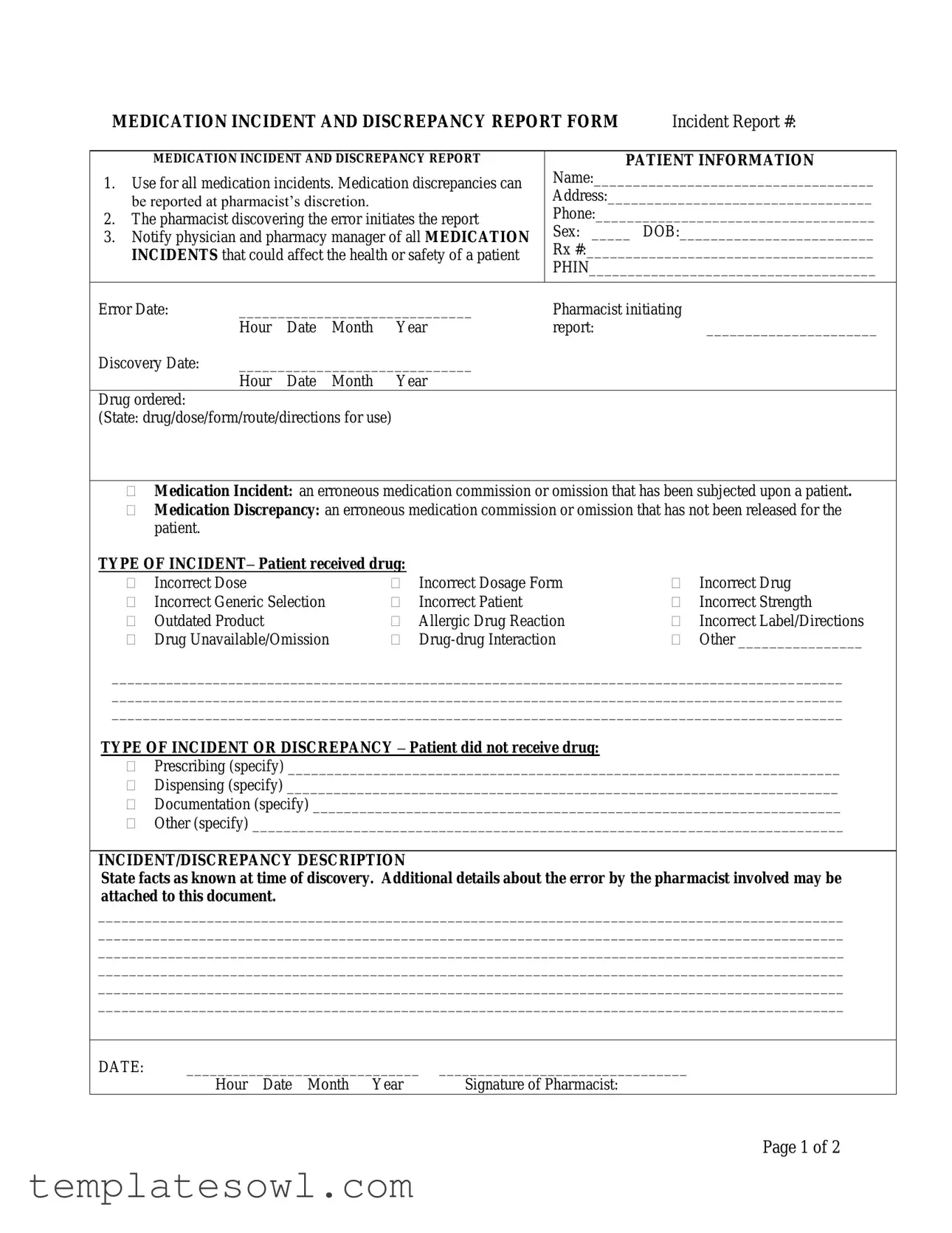1. What is the purpose of the Medication Error form?
The Medication Error form is designed to report any medication incidents or discrepancies related to patient care. This includes errors made during medication prescribing, dispensing, or administration. This form helps identify issues that could affect a patient’s health and ensures appropriate steps are taken to prevent future occurrences.
2. Who should fill out the Medication Error form?
The form should be initiated by the pharmacist who discovers the medication error or discrepancy. It is their responsibility to document the incident accurately and notify the relevant parties, including the patient’s physician and pharmacy manager.
3. What types of medication incidents can be reported?
Several types of incidents can be reported. These include administering an incorrect dose, using an outdated product, and failing to provide the medication at all. Other instances, such as allergic reactions or drug-drug interactions, are also documented using this form.
4. What happens after the form is submitted?
After the Medication Error form is filled out and submitted, it becomes part of the pharmacy’s records. The pharmacy team will review it to identify contributing factors and develop strategies to prevent similar errors in the future. This may involve additional training for staff or changes to existing policies.
5. Is patient information kept confidential?
Yes, patient information is treated with the utmost confidentiality. The data collected on the Medication Error form is used solely for quality improvement and safety purposes. All staff members are trained to handle sensitive information responsibly.
6. What is the definition of a medication discrepancy?
A medication discrepancy is an erroneous commission or omission of a medication that has not yet been released to the patient. This may involve issues such as incorrect entries in the medication order or a failure to dispense the drug as prescribed.
7. How is severity assessed on the form?
Severity is categorized based on the impact of the incident on the patient’s health. It ranges from no change in condition to the need for immediate medical intervention. This classification helps prioritize response actions and follow-up care.
8. Who is notified about a medication incident?
The form requires documentation of notifications made to both the patient and the physician. It’s essential that these parties are informed promptly to ensure patient safety and enable further medical intervention if necessary.


